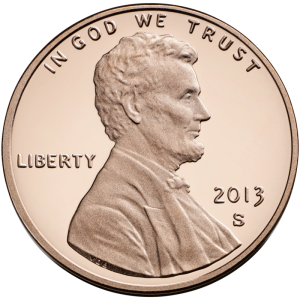 In 2016, it was recorded over 9 million pennies were produced by the US Mint and passed into circulation. This is lower than one of the record amounts of 14 billion minted in the year 2000. Some of these one cents, throughout the years of production since 1787, have become quite collectible and valuable. They are one of the most collected group of coins.
In 2016, it was recorded over 9 million pennies were produced by the US Mint and passed into circulation. This is lower than one of the record amounts of 14 billion minted in the year 2000. Some of these one cents, throughout the years of production since 1787, have become quite collectible and valuable. They are one of the most collected group of coins.
Below are 10 interesting facts on Pennies and some of the most valuable pennies to look for.
1) The Official Name for a Penny is not Penny
The US official name for the Penny, is not a Penny, but actually ‘Cent’ or ‘One Cent Piece’. The widely mis-use of the name Penny in the United States stems from the early equating of it with the British Penny which had similar value. This historic misnomer keeps its place in today’s times.
2)The Fugio Cent
The first Official US One Cent Piece produced in 1787 is commonly known as the Fugio Cent. This Cent was designed by Benjamin Franklin and is called the Fugio Cent because it includes the Latin word Fugio meaning ‘I fly’ along the coin’s side. The coin also features an image of a sun shining above a sundial and the words ‘Mind Your Business’ written across the bottom.
It is believed the coin’s design is an example of a Rebus, meaning and reminding Americans that ‘Time flies, do your work’. This is unsurprising as Franklin is known to have admired such games and word play.
The back of the Fugio Cent features 13 chain links, representing the first 13 colonies, and the words ‘We Are One’ in the center.
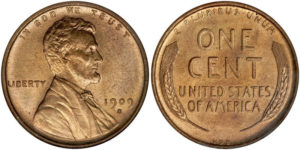
3)The VDB Cent
In 1909, the Lincoln One Cent replaced the Indian Head One Cent which had been in production since 1859. The designer’s initials for this new coin, V.D.B. for Victor David Brenner, were included in the earliest productions of the coin. The public, however, felt the initials VDB were too prominent and so the US Mint decided to remove the initials, but only after some coins were released.
These early coins which include the initials VDB below the Wheat Stalks on the reverse of the coin, and of which include the S mint mark, are highly collected because of their rarity. They are considered the most valuable of Wheat Pennies and can value thousands of dollars (depending on condition).
1909 VDB coins minted from Philadelphia are not as valuable. They may fetch only a few dollars. The reason for this is because the Philadelphia Mint produced and released millions of 1909 VDB cents from their Mint before the change. The San Francisco Mint had only released 484,000.
It should be noted the initials, VDB, were designed to be smaller and placed on Lincoln’s shoulder on the obverse, and restored to the One Cent in 1918.
4)The Wheat Penny
Many people collect Wheat Pennies. These are one cent coins produced from 1909 to 1958. The coins are easily recognizable as they feature two wheat heads on the reverse and President Lincoln on the obverse. Although most wheat pennies are more valuable than one cent (maybe 10 cents), there are a few key years to look for which are worth considerably more than the face value of one cent. One example is the 1909 VDB – S mentioned above.
Other years to look for are: 1914, 1915, 1922 (more below), 1924, 1926, 1931, 1943 (more below), 1944 (more below), and 1955 (more below). There are various reasons why some are worth more, but mainly because of rarity.
5)The 1922 Plain Cent
The 1922 wheat penny without a Mint Mark, is not a coin minted in Philadelphia (which often doesn’t show the P mint mark), but is actually an Error Coin from the Denver Mint. The mintmark on the Die that Denver used to strike the design on the coin filled with dirt creating coins without mintmarks or mintmarks which are very faint. This coin is highly collected, and a slot for it is often found in Coin Collector albums. But why? It’s not an official minted coin, but an error coin.
It is believed the reason for this is because the Philadelphia Mint didn’t produce any Lincoln Cents in 1922, but had in all the years before and after, so to fill this gap, they include the 1922 Plain Cent which looks like how the cent would have appeared if the Philadelphia Mint had produced them.
But these 1922 plain cents are rare and are often worth thousands of dollars as many collectors need them to complete albums.
6)The World War II 1942 Glass Penny
During the war, demand for metals, like copper, were at its highest. This caused the US Mint to begin experimenting with other materials to produce one cent coins. One of the tests involved making Glass Pennies. Although a failure, any example of an authentic test Glass Penny would be quite valuable today as a historical novelty. Only two are known to exist, and one sold for over $70,000 in January 2017.
7)The 1943 Copper Penny
The World War II demand for copper resulted in the US to mint Steel Pennies in 1943, instead of the normal copper. Steel plates used to make pennies replaced the copper. However, a few coins were minted in 1943 which were copper, and not the intended steal. These coins are extremely valuable and collected today. More can be read here: A Penny Treasure in Pocket Change
8)The 1944 Steel Penny
The Steel Penny of 1943 had its issues, and so the US Mint returned to making Copper Pennies in 1944. However, just like what happened in 1943 when the Mint switched to Steel, wrong plates were used for a few coins. This resulted in Steel Pennies, and not Copper Pennies to be minted and go into circulation in 1944. These are error coins and again are highly collected and valuable.
One of the more popular and less rare error cents for collectors to look for is the 1955 Double Die Cent. The US Mint produced and released about 24,000 one cents which have a double image. This Doubling is seen most in the date, and was caused by a misalignment of the second strike. Check your change for these as they often sell for over $1000 dollars, and you might find one in your pocket or coin collecting jar!
10)Find Rare Coins in Rolls and Pocket Change
Roll hunting for pennies is a great way to fill coin collecting albums, and to also keep an eye out for the more rare coins while doing so. Plus, one never knows when a valuable coin, which had been sitting in a jar of change for decades, gets put back into circulation. Always check your change! There may be treasures passing through your hands at any time!
Collecting coins is a great way to learn about history, while having fun and excitement doing so. The One Cent is one which offers lots of options and years to collect. It’s a wonderful coin to collect.
Best of luck with all that you seek! Always Treasure the Adventure!
And CONGRATS to Spallies! Winner of the MW Newsletter treasure hunt game and $10 E-Gift Card from Amazon!
The MW Newsletter asked ‘What am I?’ The answer was a Penny (reverse side). The image was a close up shot of the penny below the motto ‘E Pluribus Unum(out of many, one).
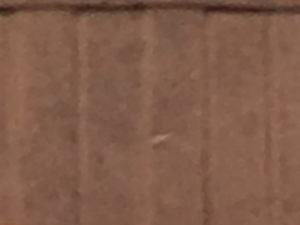
.

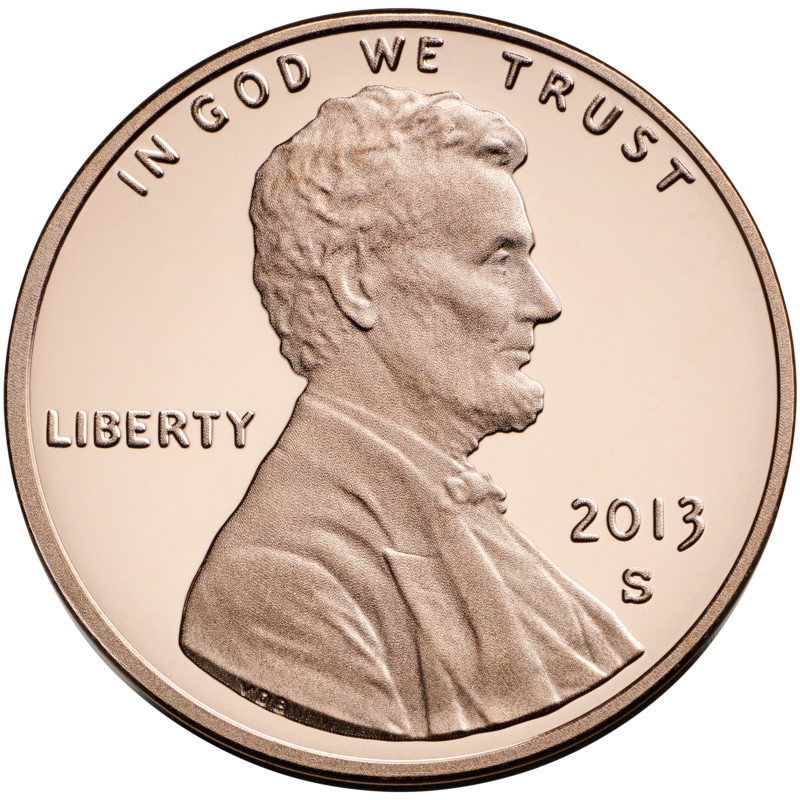
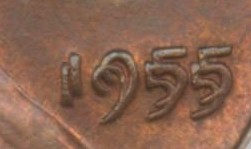
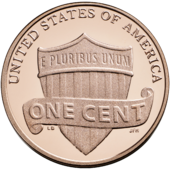
Thank You Ms. Kile, very informative!
Wow, that was good Spallies! I would have never had guessed that. Thanks Jenny!
Hello Jenny. I enjoyed this post, and will need to go through some of the wheat back pennies to see just what we have.
Congratulations, Spallies.
Now I can upgrade my hotel room for Fennboree 🙂
Woo hoo, Spallies! 🙂
Thanks all….and I have to go back through my wheat pennies as well, pdenver. I hadn’t known about the 1955 double die one….. Please let me know if you find one…and I will too!
I will, Jenny. Hope you find one!
Jenny, I have a question for you. Should you find a double die, would you keep it because of the rarity, or would you sell it?
I would definitely KEEP IT……I could never sell such a Treasure (Plus some of the Wheats are from my Dad (so so extra special then)! And when the time comes for new hands, I would pass it to my children…..or their children…. (and of which all the Wheats (and other coins I collect) would go)
I took time to go through 3 rolls of wheats I have so far…and that is all I will get to do today, but I found 4- 1955’s, but no Double Dies…. Still I was happy to find 1955’s…lol…
What about you? Keep it or sell it?
I haven’t checked my wheat backs yet. They’re locked up, and I’m not sure where my husband has the key. I would do exactly as you…keep it and hand it down to my children. If I can’t find six, then I might be in trouble. lol
I’m hooked on coins now.
Was when I was young & got rid of my collection only to realize now I should have saved them & pay more attention to those little coins.
99% of folks don’t know that the actual value is much more than face for spare change.